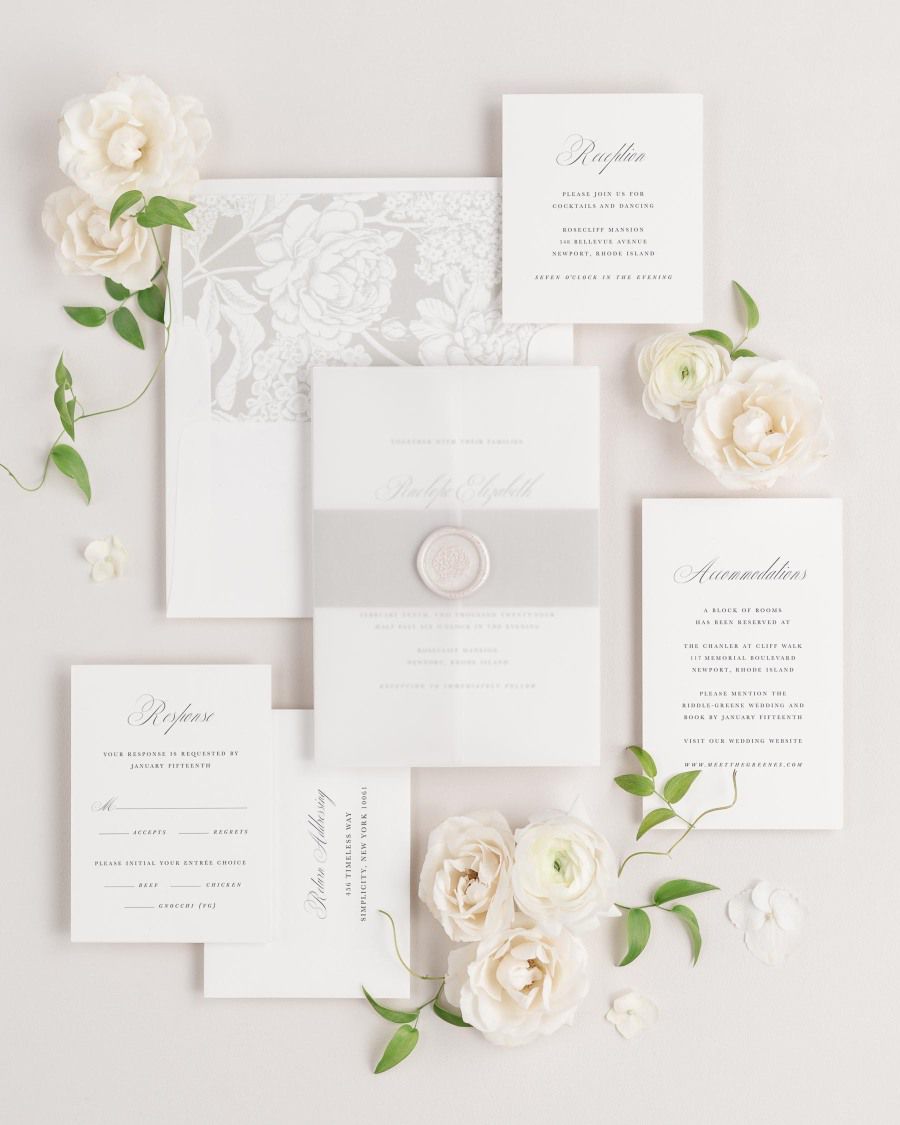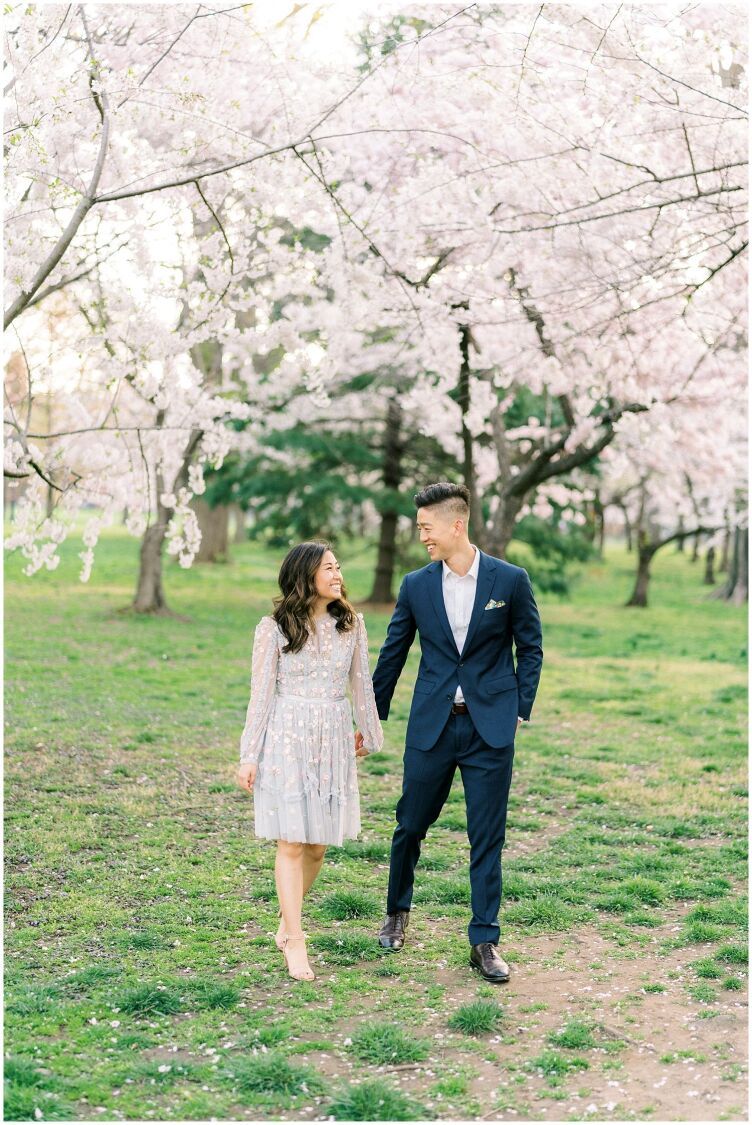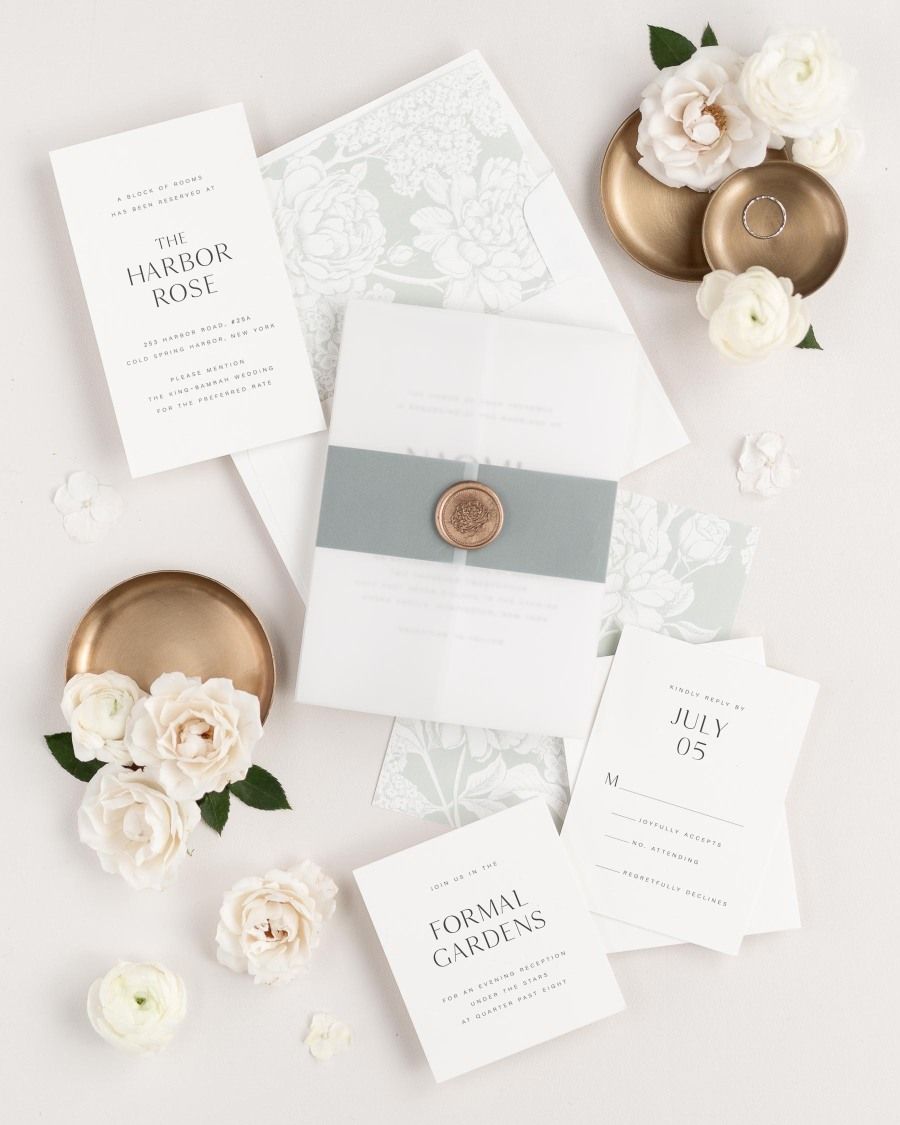Everyone knows a bride wears white, and the groom isn’t supposed to see the bride before the ceremony, among many other traditions. However, not many couples know where these traditions came from.
Explore 10 wedding traditions and meanings as you decide which ones you want to carry on and which ones you might replace with modern variations.

Key Takeaways:
- Queen Victoria established many modern traditions in her famous wedding to prince Albert.
- Arranged marriages introduced traditions like wearing a veil and not seeing the bride before the ceremony.
- Most traditions have modern variations that give you creative freedom.
1. The Bride Wears White
Today, 83% of brides wear white wedding dresses. However, that tradition didn’t become popular until 1840, when Queen Victoria wore a white gown to her wedding. Before then, brides wore the nicest dress they owned.
A magazine in 1849 began encouraging girls to wear white to symbolize purity. However, the white dress became a status symbol rather than a sign of virtue since only the wealthy could afford to wear a white dress without stains or dirt.

2. The Bride Wears a Veil
The wedding veil originated as a way for brides to cover themselves fully for modesty. It also hid the bride from evil spirits who might try to steal her happiness.
Veils were traditional in arranged marriages, so the groom wouldn’t see his bride before committing to her and running off.
Queen Victoria, who brought us the white dress, also made veils more mainstream and with more pleasant connotations, like status and elegance.
3. The Couple Doesn’t See Each Other Before the Ceremony
Traditionally, the groom isn’t allowed to see the bride before the wedding. This came from arranged marriages when families didn’t want the groom to change his mind if he saw the bride too soon.
Since you and your fiancé have seen each other plenty of times, you don’t need to feel obligated to keep this tradition. Instead, many couples choose fun twists on this tradition, like capturing their first look privately with just a photographer present. Others like the anticipation and decide to meet before the ceremony behind a closed door to exchange letters or tender words.
4. Including “Something Old, Something New”
“Something old, something new, something borrowed, something blue, a sixpence in the shoe.”
That phrase is synonymous with weddings, but what does each item represent?
- Something old: An item from the bride’s family and past
- Something new: An item representing life ahead
- Something borrowed: An item from a happily married couple to pass on the good fortune
- Something blue: Blue is the symbol of loyalty, purity, and faithfulness
- Sixpence: A penny or coin in the shoe for wealth and happiness
5. The Bride Stands to the Left
You might not think much about what side of the altar you stand on, but there’s a traditional order. The bride stands to the left of the groom. This position frees up the groom’s right hand so he can protect his bride in a swordfight if other suitors try and steal her away.
6. Who Is in the Bridal Party
The best man and maid of honor were traditionally witnesses for the wedding. This tradition dates back as far as the Roman Empire. Later, the best man took on another role: protecting the couple against angry family members or attackers.
The bridesmaids also played an important part in weddings, especially their matching outfits. The matching outfits would confuse evil spirits because the spirits wouldn’t know who the actual bride was.
Unless you expect evil spirits at your wedding, you can feel free to be more creative with your girls’ attire.
7. The Bridal Bouquet
The bridal bouquet is an old wedding tradition dating to ancient Egyptians, Greeks, and Romans. Instead of an elaborate array of flowers, brides would carry herbs like garlic and dill. The spices kept away evil spirits.
During the Middle Ages, brides also carried flowers to mask their smell because baths weren’t that popular.
Queen Victoria’s famous wedding transformed the bouquet and its questionable origins into a decorative addition to the wedding ensemble.

However, the bouquet toss had quite a different origin as it was initially a replacement for the garter toss.
Showing the garter was a way to prove a couple consummated the marriage. Guests then began chasing the bride to steal the garter or rip pieces of the dress for good luck at a wedding. Couples started tossing the garter so guests would leave them alone, and the couple could escape without embarrassment. Eventually, couples decided the wedding bouquet was a more tasteful tradition and tossed the garter for good.
8. The Wedding Cake and Topper
The wedding cake comes from the Ancient Romans, who would break bread over each other’s heads. Thankfully, when the tradition changed from bread to cakes covered in icing, couples also switched to cutting the cake. One study shows that 77% of couples cut their cake during the reception.
The bride cutting the wedding cake represents fertility. Because children often came soon after the wedding, couples would keep the top tier of the cake for their first child’s christening. However, today couples cut the cake together to represent supporting each other, and they eat the top tier of the cake on their first anniversary.
The cake topper was again one of many traditions in a wedding introduced by Queen Victoria.
9. Ringing Wedding Bells
Wedding bells are a part of many church weddings, but this has a purpose beyond just announcing a new couple. Wedding bells came from ancient Celtic and Irish times. Bells are a symbol of prosperity, and they also warded off evil spirits.
Irish brides often carried small bells on their bouquets to avoid bad luck. So while you might not be concerned about evil spirits, bells still make an elegant and traditional décor item for any formal wedding.
10. Sending Wedding Invitations
Sending out wedding invitations is now a vital part of every wedding. Traditionally, town criers would announce a wedding, and anyone who heard the announcement could attend. However, the wealthy handwrote their wedding notices since many of their friends could read.
Once the printing press arrived and newspapers were a staple in every household, couples announced their big day in the newspaper.
Printing individual wedding invitations was reserved for the wealthy until after World War II when stationary was more affordable, and everyone could send out an elegant announcement to all their friends.
What Traditions Will You Adopt?
While many traditions can add to your big day, one of the most important traditions to keep alive is the wedding invitation, as it lets your loved ones know about your wedding and sets the stage for the rest of your traditional and new wedding events.
Explore our collection of traditional and timeless wedding invitation designs.
Photo Credit:
- First Look: Sweetlife Photography
- White Dress: Claire Diana Photography
- Bridal Boquet: Mackenzie Reiter Photography









Request a Free Sample Set
Experience our papers, colors, and printing in person.
Not Sure Where to Start?
Take our styling quiz to find the right look and configuration for your stationery.
Bring Your Vision To Life
Browse our invitations and find the perfect design for your wedding.
A Difference You Can Feel
Make a statement with our luxurious letterpress wedding invitations
See Us Shine
Client visions brought to life #shinenewlywed






